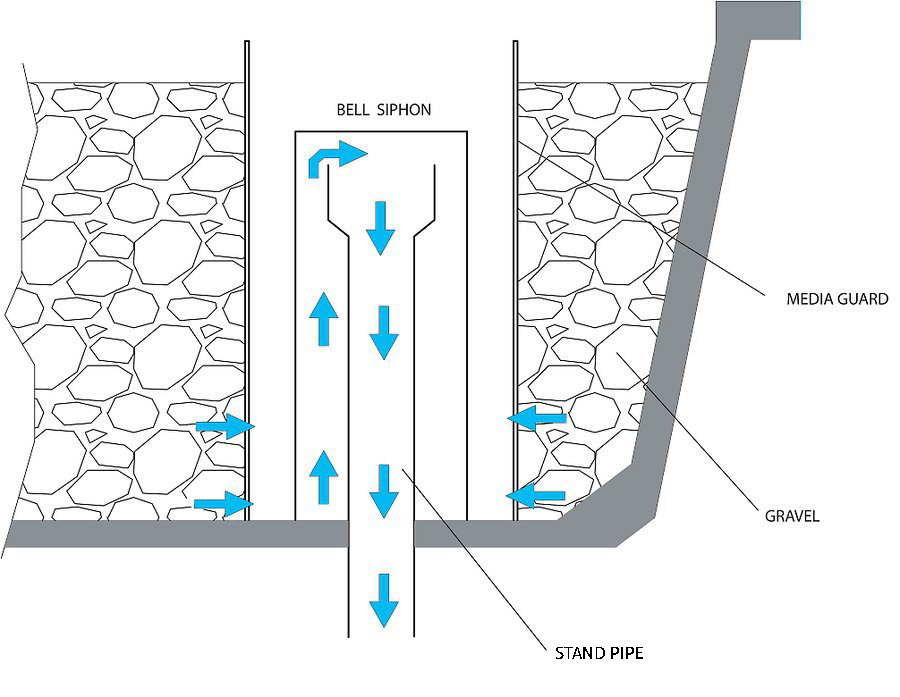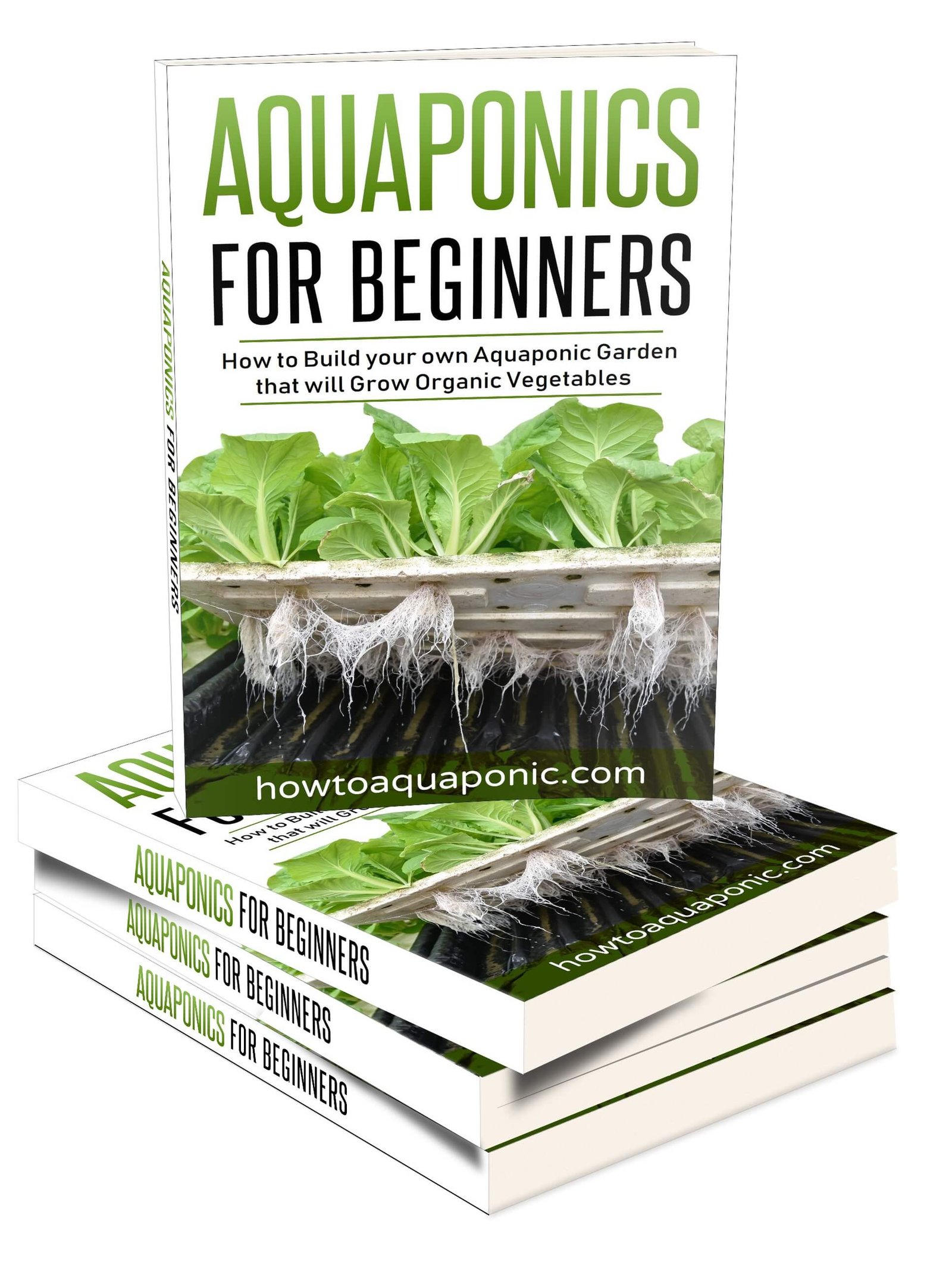Aquaponics is a specific type of farming that combines raising fish with growing plants without the use of soil.
Its name is, in fact, a combination of aquaculture (raising fish) and hydroponics (soil-less growing of plants). Its purpose is to create an integrated system where the waste produced by the fish provides nutrients for the bacteria, while bacteria filter the water for the plants.
We will specifically be looking at the U siphon for aquaponics today and how it can be a great addition to your system instead of the standard bell siphon.
What Is a U Siphon?
A U siphon refers to piping which is used to drain media beds. It is made of PVC and sometimes also referred to as loop siphons (read: is PVC safe?). The placement of the U siphon involves the tubing coming out of the grow bed. A loop is then formed by the tubing. You can adjust the loop to whatever height you deem necessary. This height will denote the maximum height that the water will reach in the grow bed. The loop can be adjusted as many times as you need, making the U siphon very flexible.

The water flow rises till all the air has been expelled from the tube. It is in this way that the siphon effect is created. The water will proceed to drain from the grow bed until the water level has reduced enough to allow air to re-enter the tube.
Note that U siphons should be kept out of sunlight or be made of dark material. This is important or else algae will begin to grow inside the tubing.
What Is the Purpose of a Siphon?
Essentially, a siphon is used in order to drain grow beds conveniently. The reasoning behind this is that the rapid draining makes nutrients more accessible to plants while providing roots with high oxygenation. This facilitates healthy growth as the roots are able to fully absorb oxygen.
Siphons are attractive to aquaponics in particular because they provide an effective and simple method for draining water while the pump is still running.
Aquaponics Autosiphon is a term commonly used in these discussions, which merely refers to siphoning mechanisms which function automatically based on the changing water levels.
U Siphon Aquaponics
When it comes to aquaponics, siphoning is an extremely important aspect of maintenance. It is very important to have proper mechanisms installed so that your grow bed is able to remain healthy. A U siphon is an excellent solution.
Generally speaking, a U siphon is the easiest type of siphon to install, making it very convenient. Additionally, you have the option of installing it internally or externally. As mentioned above, you can also easily adjust the loop of the tubing as often as you need to, making the U siphon a versatile option. I would recommend installing it to the outside of your grow bed.
You can also find autosiphon options if you are going to install the U-bend type. This specific type of installation would provide you with one of the simplest siphon mechanisms possible. Overall, it is safe to conclude that U siphons have great utility for aquaponics.
U Siphon vs Bell Siphon
As helpful as a U siphon is, it is also not the only option available to you. Bell siphons are another commonly used mechanism. It can be hard to determine which method is more beneficial, so we will discuss both so that you can develop your understanding.

As mentioned above, a U siphon is easy to install, flexible, and convenient. In this way, it becomes a very attractive option for many. A bell siphon, on the other hand, requires some effort.
It’s also a siphoning device that functions completely on its own, meaning that there are no moving parts. Additionally, it uses a mix of pressure and gravity in order to flood the grow bed. Once the water level has reached a certain point, it will automatically start draining it. You will also note that a bell siphon maintains a minimum water level during the drainage process.
The biggest distinction between a U siphon and a bell siphon is in the installation. A U siphon is generally much simpler to install and is fairly flexible, making it perfect for beginners or anyone wanting to avoid too much of a hassle.
In comparison, a bell siphon might have excellent draining abilities, but the installation and priming are very challenging. Even those who are experienced with siphoning find themselves struggling with the process.
While a Bell siphon is faster, a U siphon is most convenient during installation. If a bell siphon proves to be too problematic, you could always install a U-bend with autosiphon capabilities as it offers the best qualities of both options.
How to Make a U Siphon for Aquaponics
In order to use a U siphon for your grow bed, the primary material you need is PVC piping. In order to install it, you will need to drill a hole in your grow bed right at the bottom. In this hole, you will need to place some sort of implement.
You could use threaded PVC, a replacement drain or a hose adapter. You have to place this implement in the hole and make sure it is sealed properly. Note that the pointed end needs to stick outside of the grow bed.
Once this is done, you can use the PVC to create a loop. Remember the height of the loop determines the maximum height of the water level. Make sure your aquaponics U siphon leaves some space between the loop and top of the grow bed. For a step-by-step guide, you can view this video (u-siphon in grow bed).
Conclusion
A U siphon is a very helpful tool for anyone interested in aquaponics. It provides you with an excellent solution for the healthy maintenance of your grow bed. Of course, being able to adjust a U siphon adds to its appeal. Most importantly, though, it is very convenient to install. Beginners in particular will find that using a U siphon is the best solution for their grow bed draining needs.
 I have written a book that contains all the information you need to get started with aquaponics.
I have written a book that contains all the information you need to get started with aquaponics.
Don’t be the person that makes painful mistakes during your first aquaponics build!
It has 265 pages filled with information about aquaponics. It’s available in paperback or eBook format.
You can buy it here on Amazon.com

Nick loves building, managing and giving others advice on aquaponics. He created this website to do just that. He is the author of Aquaponics for beginners. If you got a question contact him here or read more on the about page here.
